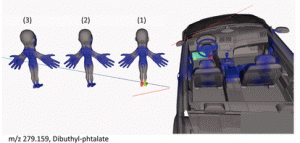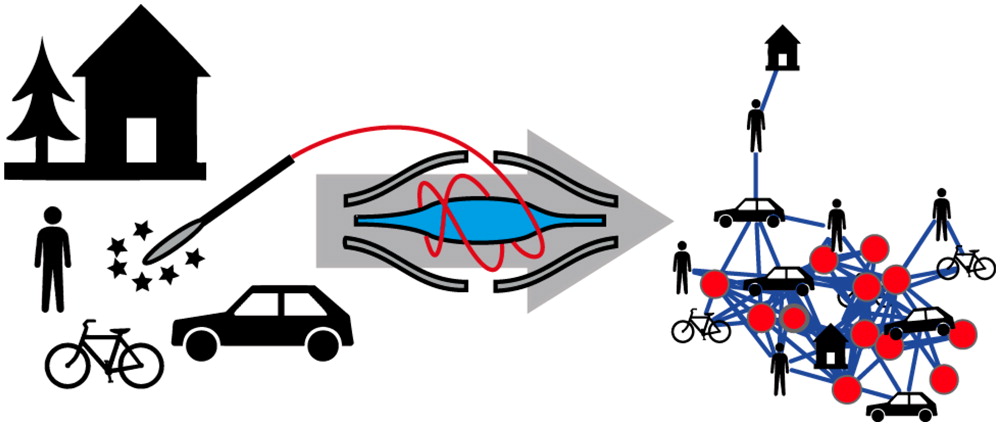Title: Mass Spectrometry-Based Visualization of Molecules Associated with Human Habitats
Authors: Daniel Petras, Louis-Félix Nothias, Robert A. Quinn et al.
Year: 2016
Journal: Analytical Chemistry
http://pubs.acs.org/doi/abs/10.1021/acs.analchem.6b03456
Whenever you lose your iPhone, you may seek help from GPS with your “Find your iPhone” app. What if one day you could find it with its chemical identity?
Humans interact with the environment in many ways. From the chemical perspective, humans are constantly exchanging chemicals with the surroundings. In fact, the presence of chemicals in our living places can teach us about our interaction with the environment.
So, first we have to identify the chemicals in our living places. One of the tools that chemists use to identify molecules is mass spectrometry (MS). It knocks out electrons from the molecule, forming the parent ion, which is then detected according to its mass-to-charge ratio. With tandem mass spectrometry, the parent ion is knocked again, causing it to break down into smaller daughter ions. This process generates a spectrum, which is like a fingerprint of the molecule. Comparing the spectrum with those in the well-established database, chemists can confirm the identity of the molecule.
So, here’s how the story goes: First, researchers mimic the humans and their surroundings of study with 3D models. Then, they used ethanol-soaked cotton swabs to swab the residents and their surroundings. The molecules from these samples were extracted and analysed by a type of MS called liquid chromatography tandem mass spectrometry. The spectra of these molecules are compared with those from the known database to reveal their identity. They were then mapped to the 3D models to elucidate the chemical interaction between humans and their environment.
Figure 1 shows the 3D map of car environment from the chemicals’ viewpoint. Many molecules were detected in both the car owner and the driver seat area. In particular, a common plasticizer, dibutyl phthalate, was detected significantly in the car owner as well as the driver seat, but none was detected in the regular passenger of the car nor the stranger. The results have shown molecules of personal care products, workplace, and food could also be found in daily transportation.

 Figure 1 Molecular 3D map of a car, (1) its car owner, (2) its regular passenger, and (3) a stranger to the car.
Figure 1 Molecular 3D map of a car, (1) its car owner, (2) its regular passenger, and (3) a stranger to the car.

Figure 2 Molecular 3D map of a public party room and its participants.
Figure 2 shows the chemical map at a party room during a social gathering event. The molecule dihydrocapsaicin was majorly located in the bar, probably due to its presence in the spicy curry that was served in the bar. Another molecule, procyanidin B2, was also detected with a higher intensity at the bar, as it is commonly found in food such as apples and potatoes. These chemicals were also detected in people who interact with the bar, showing the transfer of molecules between people and their surroundings.
These results have shown that human interaction plays a crucial role in the distribution of various chemicals in the surroundings. In other words, the chemical fingerprints of the environment depends on human interactions .This could advance our understanding of how chemicals are migrated and transferred within the environment. On the other hand, these chemical fingerprints may be employed in forensic science to pinpoint individuals who recently interacted with certain environment, or track where certain chemicals were transported in future.


Pingback:Drawing a map with chemicals! – Eli's Science Blog